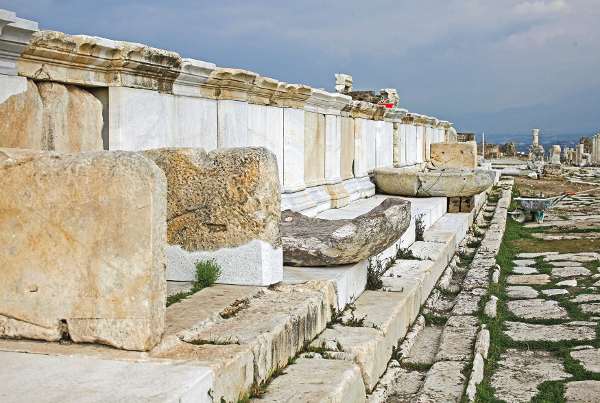Image Details

© Mark R. Fairchild, Huntington University
FOUNTAINS FOR NYMPHS AND KINGS. The column fragment with a menorah and crosswas initially discovered in Nymphaeum A, a two-storied public fountain that was dedicated to Septimius Severus. Severus ruled the Roman Empire from 193 to 211 C.E. He came to power through military strength and established the Severan dynasty of Roman emperors. The outside of Nymphaeum A—with two steps leading up to it—is pictured above. Below the first step is a gutter that took excess water away from the fountain. Two circular water basins are on the upper step (the one in the foreground is poorly preserved; the one farther back in the picture is preserved in the round).
Four other nymphaea have been uncovered at Laodicea. In its earliest form, a nymphaeum was a grotto dedicated to the nymphs, female nature deities. Grottoes were selected as suitable shrines because nymphs were thought to inhabit them. Eventually, a nymphaeum came to refer to man-made grottoes and elaborate fountains—often decorated with statues.
